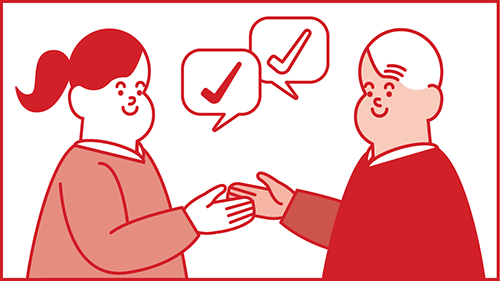Never miss a story — sign up for PLANSPONSOR newsletters to keep up on the latest retirement plan benefits news.
TIAA-CREF Simplifies Name and Participant Experience
The mission remains the same—retirement security for workers in the non-profit space—but TIAA-CREF is trimming its name to TIAA and radically simplifying its website.
The name, the look and the customer experience may be new, but TIAA (formerly TIAA-CREF) says its mission remains the same.
“It’s a journey we’ve been on for several years,” explains Ed Moslander, senior managing director and head of institutional client services, in describing the company’s decision to drop the second part of its name (college retirement equities fund). “The idea is to place the emphasis on simplicity, clarity and engagement at the center of our customer experience,” he tells PLANADVISER.
Market research revealed that customers called the firm TIAA, which conveys a simpler, performance-driven image, Moslander says. “Our equity was there,” he explains, “and many also told us the shorter name signals that we are easier to do business with.”
Although the name of the overall company is changing to TIAA, the underlying mutual funds, annuities and other financial products will stay the same, says Moslander. CREF annuities will still be named CREF. Nuveen Investments, which TIAA acquired in 2014, also does not change in any way.
The website redesign will spark greater participant engagement, Moslander predicts. “That is the top desire of every plan sponsor: for employees to become more engaged and understand the benefit the plan sponsor is providing,” he says. Primarily, plan sponsors will be able to see a change in how employees engage with the retirement plan. Moslander says the new site is much cleaner, more modern, simpler and more engaging, whether used on a computer or on a mobile device.
TIAA’s testing of user reactions and leveraging of behavioral research led them to test several concepts. “A lot of financial sites default to a content level for the engaged investor,” Moslander explains. Yet near all their customers—94%, according to Moslander—find that level of detail overwhelming and confusing. Instead, TIAA chose to be radically simple and ditch the financial jargon.
NEXT: From pages to sentencesPerhaps the best example, Moslander says, is the fixed-income guaranteed product, traditionally described in detail in numerous pages. Paradoxically, the longer the explanation, the lower people’s understanding. “Today, it’s sentences,” he says, “that get the essence of what the product provides. It is the most significant thing we’ve done.”
Another concept borrowed from behavioral economics is attention economy. “Most people get way more information than they can use,” Moslander points out. The danger is that people can find themselves drowning in too much information, so the site tries to be sparing of the individual’s attention economy with carefully chosen colors that contrast (black and white, or another combination that draws the eye), attractive font size and enough white space on the page. This way, people can easily find the most important information without a lot of clutter or distraction
The user experience was built on mobile use, according to Moslander. “What do people do on a phone? They scroll. So we made this scrollable rather than link to link, rather than a page-view experience.”
As participants grow more accustomed to engaging digitally with sites such as Amazon, they look for that similar ease of experience in other sites. “We think that by making our digital and mobile experience more relatable to other digital experiences, plan participants are going to engage more frequently,” Moslander says.
“We’ve so simplified the delivery of the information that the reasoning is, participants won’t have to go back to their plan sponsors with questions,” Moslander says. “They’re going to be able to get the information in digestible, simple language. Complexity can be the great enemy of understanding—or even action.”
The site offers more self-service, which could take some off the burden off plan sponsors. Whether it’s getting retirement illustrations or seeing what an accumulation could bring as retirement income or running different scenarios around inflation or executing loans, the site is fully transactional but simple and intuitive.
“We are not changing our heritage or mission,” Moslander says emphatically. TIAA’s mission—delivering retirement products and services to the nonprofit market—is unchanged but is now clearer through the rebranding and the look and feel of the site’s redesign.
The new site is now live at TIAA.org.


